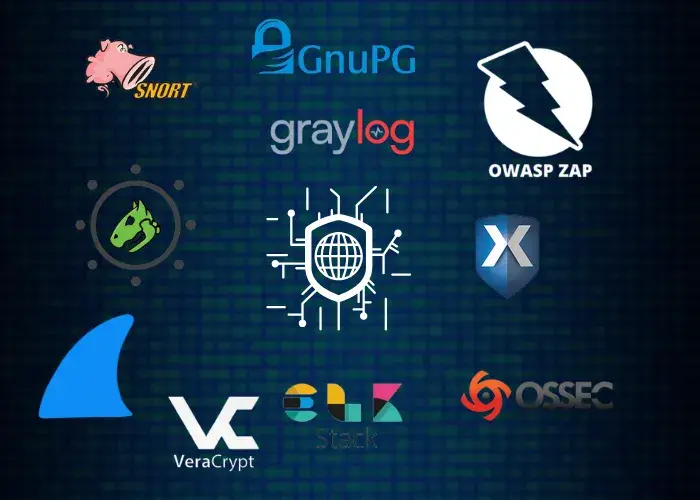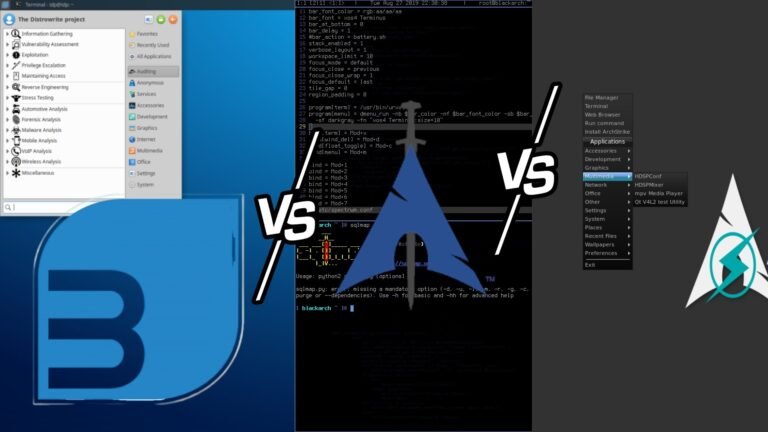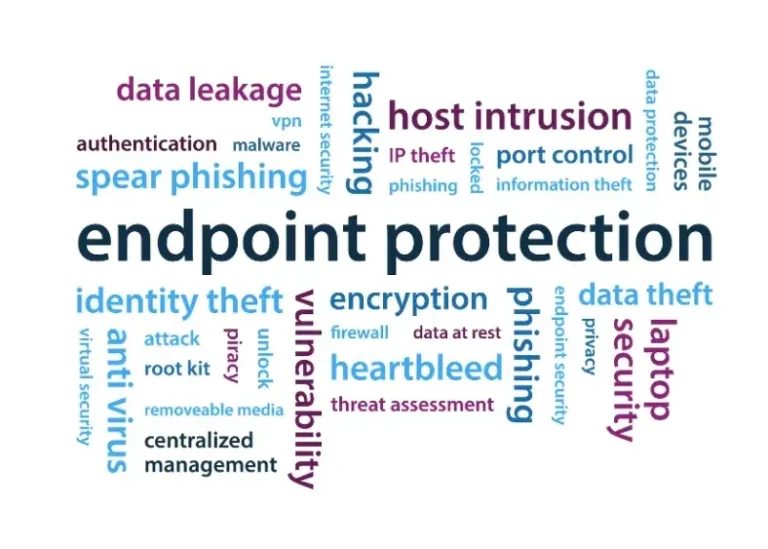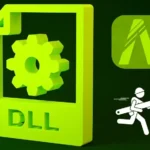Introduction
Importance of Open-Source Cybersecurity Tools
In the fast-paced world of technology today , protecting sensitive data has never been more crucial. As cyber threats continue to grow and adapt, organizations—big and small—must bolster their defenses against potential breaches. One solution gaining popularity is open-source cybersecurity tools. Unlike proprietary software, these tools are crafted by a worldwide community, offering users both accessibility and flexibility to tailor solutions to their specific needs. Open-source tools come with several advantages:
- Cost-effective: Often free, they can significantly reduce IT budgets while still offering extensive capabilities.
- Transparency: With open-source code, users can audit and verify software’s reliability and security features, fostering trust in the tools they employ.
- Community Support: A vibrant community continuously analyzes, improves, and updates these tools, which can lead to rapid responses to newly emerging threats.
Take, for instance, Wireshark—a powerful network analyzer. Its open-source nature allows cybersecurity professionals to customize it for specific investigations, ultimately enhancing the efficiency of data monitoring and analysis.
Criteria for Selecting the Top Tools
When navigating the expansive landscape of open-source cybersecurity tools, selecting the right one can be daunting. To streamline this process, consider the following criteria:
- Functionality: Determine the primary functions each tool offers. Does it focus on network security, endpoint protection, web application security, or other areas?
- Usability: Tools should not only be powerful but also user-friendly. A well-designed interface can significantly decrease the learning curve.
- Community Activity: Active communities often lead to more regular improvements and updated documentation, which can be invaluable for users.
- Compatibility: Ensure that the tool seamlessly integrates with existing systems and software to maximize its effectiveness.
- Performance: Evaluate the tool’s efficiency and speed in processing tasks, as slow tools can hinder a security team’s responsiveness in crisis situations.
With these criteria in mind, organizations can effectively identify and implement open-source tools tailored to their cybersecurity needs. Proper selection ensures a stronger defense against the ever-evolving landscape of cyber threats.
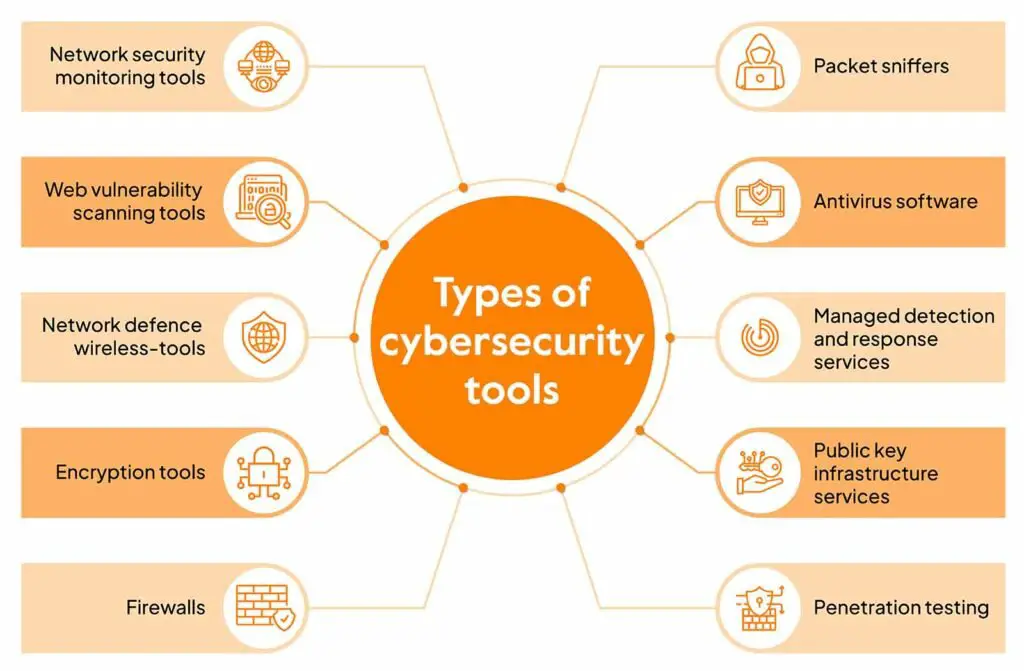
Open-Source Cybersecurity Tools Overview
Definition and Benefits
Understanding the core of open-source cybersecurity tools begins with defining what they are. Essentially, these are software programs whose source code is made available to the public. This accessibility allows anyone to view, modify, and distribute the code, fostering collaboration and innovation. By leveraging the collective intelligence of developers and security experts worldwide, open-source tools are continuously refined and enhanced. The benefits they provide can be substantial:
- Customizable Solutions: Organizations can tailor the software according to their specific security requirements. For example, a company with a unique network architecture might adjust the code of a network monitoring tool to better fit its environment.
- Cost Savings: Many businesses, especially startups, appreciate the financial relief offered by free open-source tools. This allows them to allocate funds to other critical areas, like personnel training or hardware upgrades.
- Rapid Updates: The collaborative nature ensures that vulnerabilities are quickly identified and patched. For instance, if a flaw is discovered in a popular tool like Snort, the community can mobilize almost immediately to provide a fix.
Having experienced a security breach at a previous organization, the author witnessed firsthand how using an open-source threat intelligence platform significantly improved post-breach defenses. This transition not only fortified their systems but also revitalized their approach to cybersecurity.
Evolution of Open-Source Tools
Open-source cybersecurity tools have come a long way since their inception. Originally, many tools were developed by individual programmers or small teams aiming to address niche problems. Over time, prominent projects like Wireshark and OpenVAS emerged, garnering attention and support from larger organizations and government agencies. Key milestones in the evolution of these tools include:
- Increased Collaboration: As the internet became more integrated into everyday life, communities formed around specific tools. These interactions allowed users to share experiences, best practices, and enhancements.
- Integration of Advanced Technologies: Machine learning and artificial intelligence have started to play more significant roles in open-source tools, allowing for smarter threat detection and automation in response to vulnerabilities.
- Expanded Adoption: Companies of all sizes have started to recognize the potential of open-source solutions. This adoption leads to a broader range of available tools, ensuring cybersecurity is accessible and effective for everyone.
As these tools continue to adapt and grow, the landscape of cybersecurity remains dynamic, with potential for even greater improvements on the horizon.
You May Like: Key Differences Between IAM and PAM Solutions: A Comprehensive Comparison 2024

Tools for Network Security
Snort
When it comes to network security, one tool that often tops the charts is Snort. This open-source Intrusion Detection System (IDS) is highly regarded for its ability to monitor network traffic in real-time. Developed by Martin Roesch in 1998, Snort combines the roles of a sniffer, packet logger, and intrusion detection system, making it a versatile choice for cybersecurity professionals. Here’s what makes Snort stand out:
- Real-Time Analysis: Snort processes packets in real time, allowing for immediate threat detection.
- Flexibility: Security teams can customize detection rules to meet their organization’s unique security requirements.
- Active Community: With a dedicated user base, there are regular updates and shared rules to counter new threats as they emerge.
In personal experience, implementing Snort in a network security framework helped identify several attempted breaches that would have otherwise gone unnoticed. The alert system effectively notified the team about suspicious activities, enabling rapid response and mitigation.
Wireshark
Another critical tool in the realm of network security is Wireshark. This network protocol analyzer has been a favorite among security analysts and network engineers alike. It captures and displays the data traveling over a network in real time, allowing users to inspect each packet closely. Key features of Wireshark include:
- Comprehensive Protocol Support: Wireshark can analyze hundreds of different protocols, making it suitable for diverse networking environments.
- Powerful Filtering Options: Users can swiftly filter traffic to focus on specific communication, significantly streamlining the investigative process.
- Community-driven: Regular contributions from the open-source community ensure that protocols are consistently updated and the tool remains relevant.
In a previous role, a network engineer used Wireshark to diagnose unusual latency issues in the organization’s network. By identifying a flood of unintended broadcast packets, the team was able to isolate a faulty device and implement a fix, enhancing overall network performance. These two tools, Snort and Wireshark, exemplify the importance of robust network security solutions. They not only fortify defenses, but also empower cybersecurity teams to proactively manage and respond to threats with confidence. By investing in such open-source tools, organizations can significantly enhance their security posture without incurring hefty costs.
| Feature | Snort | Wireshark |
|---|---|---|
| Purpose | Intrusion Detection System (IDS) | Network Protocol Analyzer |
| Functionality | Real-time traffic analysis and logging | Packet capture and analysis |
| Analysis Type | Alerts on suspicious activity | In-depth packet analysis |
| User Interface | Command-line interface | Graphical user interface |
| Setup Complexity | Moderate | Low to Moderate |
| Usage Context | Security monitoring | Network troubleshooting |
You May Like: Is Disposable 10-Minute Mail Trackable? Myths and Realities Explored – 2025
Tools for Endpoint Security
OSSEC
Shifting focus to endpoint security, one of the standout tools is OSSEC (Open Source Security Event Correlator). This award-winning tool is widely used for host-based intrusion detection, providing robust monitoring capabilities for individual devices connected to a network. OSSEC’s key features include:
- Log Analysis: OSSEC analyzes logs from various operating systems, applications, and network devices, allowing organizations to identify potential threats quickly.
- File Integrity Monitoring: This feature ensures that critical system files remain untouched, alerting administrators of any unauthorized modifications.
- Real-time Notifications: Whenever a threat is detected, OSSEC sends immediate alerts, enabling quick investigation and response.
In a past project, implementing OSSEC for a client significantly enhanced their endpoint security. After integrating OSSEC, the company reported a noticeable reduction in successful attacks, attributed largely to its proactive monitoring capabilities. It turned out that the alerts helped the security team focus on high-risk areas, improving their incident response time dramatically.
ClamAV
Another essential player in endpoint security is ClamAV, an open-source antivirus engine known for its versatility and efficiency. Designed primarily to detect malware, ClamAV plays a vital role in safeguarding systems against various threats. Here are some standout features of ClamAV:
- Cross-Platform Compatibility: ClamAV can run on multiple operating systems, making it a flexible choice for diverse environments.
- Regular Updates: The tool receives frequent updates from an active community, ensuring that it can detect the latest malware threats.
- Command-Line and GUI Options: ClamAV offers both command-line and graphical user interface options, accommodating users with varying levels of technical expertise.
I recall a situation where an organization faced challenges with malware infections across their endpoints. By deploying ClamAV, they quickly identified and quarantined the threats. The centralized detection and reporting mechanisms provided by ClamAV enabled the IT team to address vulnerabilities systematically and restore their network integrity. In summary, OSSEC and ClamAV are invaluable tools in the domain of endpoint security. Each provides unique features, but together, they create a powerful combination for safeguarding devices against threats. By leveraging these open-source solutions, organizations can ensure their endpoints are fortified and resilient in the face of ever-evolving cyber threats.
| Feature | OSSEC | ClamAV |
|---|---|---|
| Type | Host-based Intrusion Detection | Antivirus Software |
| Purpose | Security monitoring and analysis | Malware detection |
| Platform | Cross-platform | Cross-platform |
| Detection Method | Log analysis and integrity checks | Signature-based scanning |
| User Interface | Command-line and UI options | Primarily command-line |
| Real-time Alerts | Yes | Limited |
| Community Support | Strong | Established |
Tools for Web Application Security
OWASP ZAP
Continuing the conversation about cybersecurity tools, we now turn our attention to web application security. One of the most powerful and widely used tools in this space is OWASP ZAP (Zed Attack Proxy). Developed by the Open Web Application Security Project (OWASP), ZAP is designed to help find security vulnerabilities in web applications during all stages of development. What makes OWASP ZAP particularly appealing includes:
- User-Friendly Interface: Whether you’re a seasoned security expert or a novice, ZAP’s intuitive graphical interface makes it easy to navigate.
- Active Scanning: ZAP can actively scan web applications for known vulnerabilities, providing immediate feedback about potential security flaws.
- Extensibility and Integration: Users can enhance ZAP’s capabilities through plugins, making it adaptable to various environments and requirements.
In practice, I’ve observed a team use OWASP ZAP for a web application project aimed at protecting sensitive user data. The team’s ability to run automated scans allowed them to identify issues like Cross-Site Scripting (XSS) vulnerabilities well before the launch date. Not only did this bolster the application’s security, but it also instilled a sense of trust among the clients regarding their data protection measures.
You May Like: Top Vulnerability Management Tools: Comprehensive Reviews and Comparisons for 2024
Nikto
Another crucial tool in web application security is Nikto. This open-source web server scanner is designed to assess the security of a web server by performing comprehensive tests against multiple vulnerabilities. Nikto offers several benefits:
- Extensive Vulnerability Database: Regularly updated, Nikto’s database includes numerous server vulnerabilities, making it a powerful resource for security testing.
- Detailed Reporting: Nikto generates detailed reports, providing actionable insights for remediation, helping teams close gaps in security.
- Broad Compatibility: The tool can operate on various platforms and is easily integrated into existing security workflows.
During an assessment of a critical server setup at a previous company, using Nikto revealed a set of configuration issues that could have exposed the server to external threats. The ease of use and rapid feedback from Nikto allowed the team to remedy the flaws quickly. Collectively, OWASP ZAP and Nikto are indispensable tools for securing web applications. They empower developers and security teams to proactively identify and address vulnerabilities, ultimately enhancing the security posture of applications before they reach end users. By incorporating these open-source solutions, organizations can maintain a vigilant defense against web-based threats.
| Feature | OWASP ZAP | Nikto |
|---|---|---|
| Type | Dynamic application security tester | Web server scanner |
| Focus | Active scanning and passive analysis | Vulnerability scanning |
| User Interface | Graphical and command-line options | Command-line only |
| Integration | Extensive integrations available | Less integration flexibility |
| Customization | Highly customizable through plugins | Limited customization |
| Language Support | Multi-language support | Predominantly English |
| Reporting | Comprehensive reporting features | Basic reporting capabilities |
Cybersecurity Tools for Vulnerability Scanning
OpenVAS
As we dive deeper into cybersecurity, it’s essential to address the important topic of vulnerability scanning. This process identifies potential weaknesses in systems, helping organizations mitigate risks effectively. One notable open-source tool in this category is OpenVAS (Open Vulnerability Assessment System). Developed from the original GNessUs project, OpenVAS has grown to provide comprehensive scanning capabilities. Here are some highlights of OpenVAS:
- Comprehensive Scanning: OpenVAS scans for a wide range of vulnerabilities including missing patches, outdated software, and misconfigurations.
- User-Friendly Interface: This tool features an intuitive web-based GUI for easier management of scans and reports, making it accessible even to those with limited technical knowledge.
- Robust Reporting: After scans, OpenVAS generates detailed reports, including risk assessments and remediation steps.
In a previous project, I led a team tasked with improving our organization’s security stance. We utilized OpenVAS to conduct a vulnerability assessment across our network. The insights provided by the tool helped us uncover several critical vulnerabilities that needed immediate attention, allowing us to prioritize patching efforts effectively.
Nexpose
Another valuable asset in the world of vulnerability scanning is Nexpose, part of the Rapid7 suite of security solutions. Unlike OpenVAS, Nexpose is a commercial product offering both free and paid versions, notable for its extensive compliance reporting capabilities. What sets Nexpose apart is:
- Dynamic Risk Scoring: Nexpose assigns risk scores based on real-time data, allowing organizations to quickly understand the severity of detected vulnerabilities and address the highest risks first.
- Integration Capabilities: It seamlessly integrates with other security tools, providing a holistic view of an organization’s security landscape.
- Automated Scanning: Nexpose can schedule automated scans at regular intervals, ensuring that vulnerabilities are constantly monitored and addressed.
During an engagement with a client’s IT department, we employed Nexpose to perform a thorough vulnerability assessment. The tool’s user-friendly dashboard allowed the team to easily track progress and prioritize remediation efforts based on calculated risk levels. In conclusion, both OpenVAS and Nexpose are vital tools in the realm of vulnerability scanning. They provide organizations with the insights needed to identify and remediate security weaknesses effectively. By leveraging these tools, organizations can enhance their defense mechanisms and safeguard their digital assets against potential threats.
| Feature | OpenVAS | Nexpose |
|---|---|---|
| Cost | Open-source, free to use | Commercial, requires a license |
| Platforms Supported | Linux, Windows (with setups) | Windows, and limited Linux support |
| User Interface | Web-based interface | Native application with web access |
| Vulnerability Database | Regular updates via community | Proprietary database, frequent updates |
| Integration | Integrates with various tools | Integrates with multiple platforms including SIEM |
Cybersecurity Tools for Encryption
GnuPG
As we explore the critical category of encryption tools in cybersecurity, GnuPG (GNU Privacy Guard) stands out as an essential resource for securely encrypting data and communications. GnuPG implements the OpenPGP standard, allowing users to encrypt files, emails, and even entire disk partitions with a high level of security. Here’s what makes GnuPG a preferred choice:
- Strong Encryption: Utilizing a combination of symmetric and asymmetric encryption, GnuPG ensures that the data remains private and is only accessible to authorized users.
- Cross-Platform Compatibility: GnuPG operates seamlessly across various operating systems, including Windows, macOS, and Linux, enabling broad adoption.
- Open Source: Being an open-source tool, it allows security experts and developers to audit and enhance its functionality, ensuring trust and transparency.
In my own experience, implementing GnuPG for email communications at a previous organization turned out to be a game-changer. By encrypting emails containing sensitive client information, we significantly reduced the risk of data breaches. Employees found that sending secure messages became second nature, fostering a culture of security within the workplace.
VeraCrypt
Another heavyweight in the encryption arena is VeraCrypt. This tool is a free disk encryption software that allows users to encrypt entire drives, partitions, and even create encrypted virtual disks. VeraCrypt is lauded for its robust security features, making it one of the go-to choices for securing sensitive information. Some of VeraCrypt’s key features include:
- Strong Encryption Algorithms: VeraCrypt supports multiple encryption algorithms, such as AES, Twofish, and Serpent, providing choices based on user preferences.
- Plausible Deniability: The software allows users to create hidden volumes within encrypted containers, which can help protect users in case they are forced to reveal an encryption password.
- User-Centric Design: VeraCrypt’s user interface is straightforward and intuitive, making it accessible for individuals and businesses alike.
I recall a scenario where a small business faced potential data loss due to a stolen laptop. By using VeraCrypt to encrypt sensitive data beforehand, they were able to ensure the information remained inaccessible to the thief, thus safeguarding their clients’ details and maintaining trust. In summary, GnuPG and VeraCrypt are invaluable tools in the encryption landscape, providing organizations and individuals with powerful methods to protect sensitive data from unauthorized access. By adopting these tools, users can enhance their data security practices and contribute to stronger overall cybersecurity measures.
| Feature | GnuPG | VeraCrypt |
|---|---|---|
| Purpose | Data signing and encryption | Full disk and partition encryption |
| Encryption Method | Public key cryptography | Symmetric and asymmetric encryption |
| Usage | Primarily for files and emails | Entire drives and virtual disks |
| Key Management | User-managed keys | No key management needed for users |
| Open Source | Yes | Yes |
Cybersecurity Tools for Log Management
Graylog
In the realm of cybersecurity, effective log management is crucial for monitoring system activities, identifying anomalies, and maintaining compliance. One standout tool in this category is Graylog, an open-source log management platform that offers powerful capabilities for analyzing and visualizing log data. Here are some compelling features of Graylog:
- Centralized Log Collection: Graylog consolidates logs from various sources, making it easy for teams to access and analyze all logs in one place.
- Real-time Analysis: With real-time data processing, Graylog enables security teams to detect and respond to incidents swiftly, which is vital for protecting sensitive information.
- User-Friendly Dashboards: The intuitive interface allows users to create custom dashboards that display relevant metrics and logs, promoting efficient monitoring.
In my past experience, implementing Graylog for a client’s security operations center transformed their ability to respond to potential threats. By setting up alerts for unusual log patterns, the team could quickly investigate irregular activities, ultimately reducing their response time to security incidents.
You May Like: How to Access the Deep Web with the TOR Browser in 2024 on Any Device
ELK Stack
Another robust solution for log management is the ELK Stack, consisting of Elasticsearch, Logstash, and Kibana. This powerful trio offers comprehensive capabilities for collecting, indexing, and visualizing log data. Key features of the ELK Stack include:
- Elasticsearch: This open-source search engine allows for rapid querying and indexing of vast amounts of log data, making it easy to find specific entries.
- Logstash: A powerful data processing pipeline, Logstash simplifies the ingestion, transformation, and routing of log data from a plethora of sources.
- Kibana: This visualization tool provides dynamic dashboards and visual representations of log data, making analysis straightforward and insightful.
Having worked on integrating the ELK Stack for a financial institution, I witnessed firsthand its impact on their incident response process. The ability to visualize log data and generate tailored reports enabled the team to uncover patterns and potential vulnerabilities, which led to enhanced overall security measures. In conclusion, both Graylog and the ELK Stack are essential tools for any organization focused on effective log management. They facilitate the analysis and monitoring of log data, empowering security teams to react quickly to incidents, mitigate risks, and maintain compliance with regulatory standards. By leveraging these tools, organizations can forge a more resilient cybersecurity posture, ultimately safeguarding their valuable data.
| Feature | Graylog | ELK Stack |
|---|---|---|
| Architecture | Centralized logging platform | Layered architecture |
| Ease of Use | User-friendly interface | Moderate learning curve |
| Customization | Robust alerting and dashboards | Extensive plugin support |
| Data Sources | Supports various inputs | Primarily focused on logs |
| Cost | Open-source with enterprise plans | Open-source with paid support |
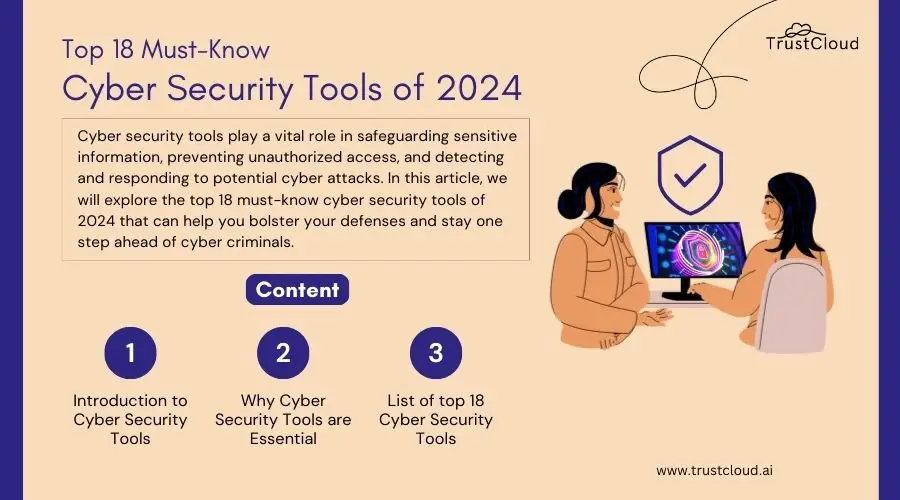
Conclusion
Future Trends in Open-Source Cybersecurity
As we reflect on the extensive array of open-source cybersecurity tools discussed, it’s also important to consider the future trends shaping this dynamic field. The demand for cybersecurity solutions continues to grow in response to escalating threats and vulnerabilities, and open-source tools are well-positioned to meet these challenges. Here are some anticipated trends:
- Increased Adoption of AI and Machine Learning: Open-source tools will increasingly integrate AI and machine learning algorithms to enhance threat detection, enabling more sophisticated responses to emerging cyber threats.
- Collaborative Development: The collaborative nature of open-source projects will foster partnerships between organizations and communities, leading to faster deployment of updates and patches to address vulnerabilities.
- Focus on Usability: With a growing number of non-technical users entering the cybersecurity realm, the focus will shift towards creating more user-friendly interfaces, making complex tools more accessible to a wider audience.
Having been part of development discussions within the community, it’s clear that innovation driven by collective input will remain a cornerstone of open-source cybersecurity advancements.
Importance of Community Support
The success of open-source cybersecurity tools largely hinges on strong community support. This network of developers, security professionals, and users plays a critical role in maintaining and evolving these tools. Key benefits of community support include:
- Rapid Response to Threats: An active community can quickly identify new vulnerabilities and work collaboratively to create fixes and updates.
- Shared Knowledge and Best Practices: Community forums provide invaluable resources for sharing knowledge, lessons learned, and best practices, empowering users to enhance their security strategies.
- Sustainability: A committed community ensures that a tool remains sustainable and relevant, even as technological landscapes change.
My experience with collaborative open-source projects has shown that when security professionals come together, they can significantly amplify the effectiveness of the tools we rely on. The sense of shared responsibility fosters a culture of continual improvement and resilience in the face of cyber threats. In conclusion, open-source cybersecurity tools are not only vital for protecting organizations but also symbolize the power of collaboration and innovation. As future trends unfold and community support strengthens, these tools are set to evolve, offering even more robust defenses against the ever-changing landscape of cybersecurity threats. By embracing these trends, organizations can fortify their security postures and safeguard their digital assets effectively.

